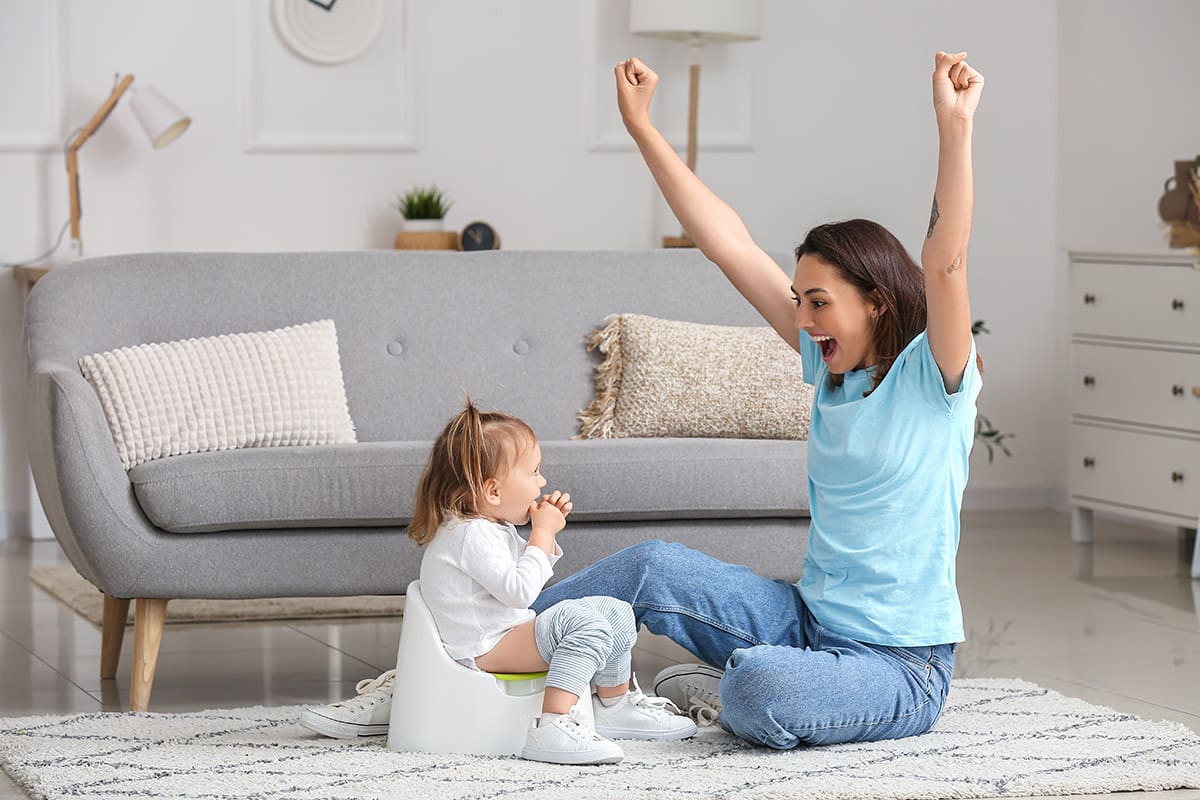

Busting Toilet Learning Myths: Setting the Record Straight
As you embark on the empowering journey of Toilet Independence for your little one, it’s essential to separate fact from fiction.
Here, we debunk six common Toilet Learning myths that might have crossed your path.
Myth 1: Place Toilets Everywhere to Encourage Bathroom Use
Placing mini-toilets throughout your home might seem like a helpful idea, but it could actually hinder progress. Our goal is to teach children to use the bathroom independently, not create a network of “diapers†in every corner. Instead, focus on prepping the bathroom as a dedicated space for your child. If your main bathroom isn’t conveniently located, consider setting up a makeshift bathroom. Check out our blog post on “Setting up a makeshift bathroom†for guidance.
Myth 2: Boys are Harder to Toilet Train Than Girls
Dispelling this myth is essential. Gender doesn’t determine readiness for toilet learning. Trust your instincts and your little boy’s capabilities. Success isn’t defined by gender; it’s about teaching and guiding your child consistently. And remember, there’s no empirical data supporting this notion.
Myth 3: Your Child Will Signal Readiness
While children show signs of readiness, they’ve been capable for a while. Babies are born with a natural instinct not to soil themselves. However, they won’t announce their readiness or hop on the toilet independently. It’s our role to provide guidance and teach them the process.
Myth 4: Pull-Ups Facilitate the Process
Transitioning can be challenging, and pull-ups might seem like a helpful middle ground. However, they’re essentially the same as diapers, only with tabs. Simplify the process by transitioning to the bathroom without the pull-up step. Pre-snap regular diapers for ease during changing, saving both time and money.
Myth 5: Frequent Trips to the Toilet Every 15 Minutes
Constantly taking your child to the bathroom might lead to resentment. Instead, build trust and encourage your child to communicate when they’re ready. Children need to learn to hold it and use the restroom when needed, not every 15 minutes. Remember, even adults don’t need such frequent bathroom breaks.
Myth 6: Starting Too Early Is Harmful
There’s no “too early†when it comes to teaching healthy bathroom habits. Children have a natural aversion to soiling themselves or their surroundings. You can introduce Elimination Communication (EC) from as early as one day old. In many non-industrialized cultures, EC is the norm, leading to babies wearing underwear full-time as early as six months.
Toilet Independence is a significant milestone that empowers your child’s autonomy. Dispelling these myths allows you to approach Toilet Learning with confidence and clarity. By separating fact from fiction, you’re laying the foundation for a successful and empowering journey toward Toilet Independence. Your child’s autonomy is taking a giant leap, and you’re right there to guide them every step of the way.
